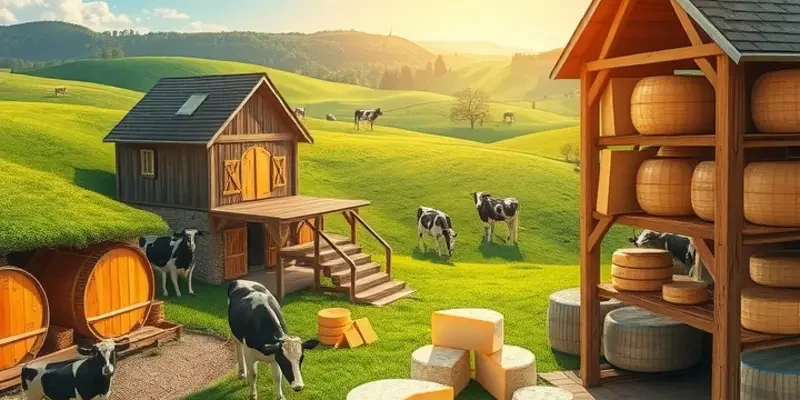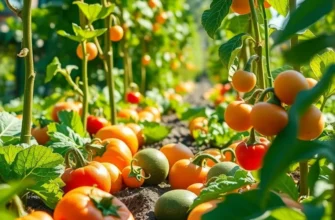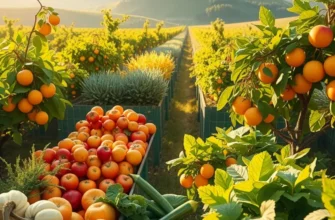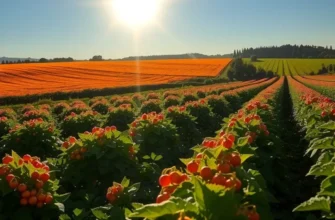From rich, creamy cheeses of Europe to tangy yogurts of the Middle East, traditional dairy practices reveal the heart of many cultures. Each region, influenced by history, geography, and local resources, has developed unique methods of transforming raw milk into scrumptious delights that reflect its rich heritage. These diverse dairy traditions not only enhance culinary experiences but also connect communities with their pasts. Discover what makes each of these dairy customs a pivotal part of their cuisine and culture.
Cheese Crafting in Europe: A Culinary Science

In the heart of Europe, cheese-making is not merely a craft but a revered art form that ties communities to their rich history and geography. This culinary science is deeply influenced by the regional characteristics such as climate, local flora, and even cultural folklore, which together shape the unique personalities of each cheese variety. The journey of cheese-making across Europe introduces us to the nuanced world of dairy, where every step of the process is meticulously executed to maintain time-honored traditions.
Take France, for instance. Here, cheese-making is a fine-tuned symphony with Brie, a soft cheese known for its creamy interior and delicate rind, playing the lead. The geographical context of Île-de-France, with its lush pastures and moderate climate, influences the milk used in Brie production. The symbiotic relationship between the soil, the cows, and the techniques handed down through generations ensures that Brie remains a staple of French culinary pride.
Travel across the Channel to England, where Cheddar cheese reigns supreme. Originating in the small village of Cheddar in Somerset, this cheese is renowned for its firm texture and sharp taste. The distinct regional climate contributes to the feed available to dairy cows, subtly influencing the milk profile. Moreover, the traditional ‘cheddaring’ process, involving stacking and turning the curd, enhances its unique sharpness. Over centuries, this technique has been refined, making English Cheddar a benchmark for hard cheeses.
Transition south to Italy, and discover the elegance of Parmigiano-Reggiano from Emilia-Romagna. This ‘King of Cheeses’ relies on specific local breeds of cows, the lush grass of the region, and a stringent aging process. Cultivating this culinary masterpiece involves the art of waiting; wheels of Parmigiano-Reggiano mature slowly, resulting in complex savory notes and a granular texture. In this cheese, the distinct Italian flair for balancing ancient tradition with consistent quality is evident.
In Spain’s Basque Country, Idiazabal cheese portrays a robust pastoral tradition. Made predominantly from the milk of Latxa sheep, this cheese is often smoked over beech or cherry wood, adding layers of flavor that reflect the rugged terrain and hearty Basque character. The interplay of these natural elements with artisanal techniques showcases a deep respect for tradition and environment.
These celebrated European regions teach us that even cooking without gums can embrace natural processes to achieve exceptional textures and flavors, emphasizing the essence of authentic, unadulterated ingredients. Understanding such technological-less contributions provides insights into the enduring significance of artisanal practices in our global culinary landscape.
The journey through cheese crafting in Europe is punctuated with stories that personify each cheese. It is a testament to how human ingenuity has shaped natural resources into products that not only delight the senses but continue to define culinary identities worldwide. As these practices evolve, they remain anchored to the tales and techniques that crafted them, weaving a rich tapestry of history and flavor.
The World of Fermented Dairy: Yogurts and Beyond
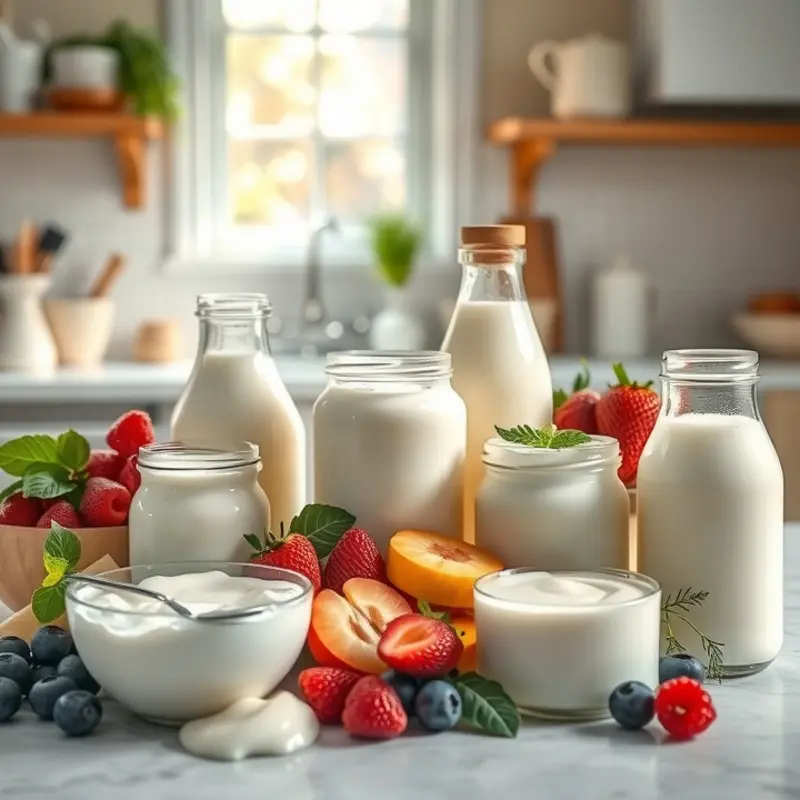
Fermented dairy products have held a vital place in human culture for centuries. Across various regions, from the bustling markets of the Middle East to the serene kitchens of Eastern Europe, these products demonstrate how common ingredients can transform into culinary masterpieces. Central to understanding this transformation is the science of fermentation—a process that extends shelf life, intensifies flavor, and enriches food with probiotics that benefit our gut health.
Fermentation begins when beneficial bacteria and yeast convert lactose, the sugar in milk, into lactic acid. This not only preserves the milk but also imparts a characteristic tang that many of us find irresistible. Yogurt, a staple in Middle Eastern cuisine, is often flavored with local ingredients such as honey and spices, creating vibrant variations that reflect the region’s agricultural diversity.
Heading north, we encounter kvass, a slightly tangy and effervescent drink in Eastern Europe. Though traditionally made from fermented bread, its milky iterations, particularly those involving the addition of whey, demonstrate the flexibility and cross-pollination of fermented dairy methodologies. Whether consumed as a refreshment or incorporated into meals, kvass echoes the region’s history and cultural preferences.
In Asia, particularly Korea, fermented dairy takes a different turn with Yukgaejang, a hearty soup traditionally enriched with sour cream. The fermentation process not only extends the shelf life but also enhances flavors, making it a beloved comfort food. The dish’s piquant combination perfectly balances the richness of beef and the pungency of chili, demonstrating how diverse ingredients can harmonize through fermentation.
India introduces us to the sweet, cooling embrace of lassi—a popular yogurt-based drink. It serves multiple purposes: a thirst quencher, a digestive aid, and occasionally a ceremonial offering. Prepared with a blend of spices like cardamom, or even fruit like mango, lassi showcases how fermented dairy can adapt and thrive across different culinary landscapes.
These diverse practices are rooted not only in tradition but in practicality. Fermentation, with its ability to enhance flavors and introduce health-promoting microbes, aligns perfectly with the demands of modern lifestyles seeking nutritious, sustainable options. For those interested in exploring non-dairy probiotic options, consider exploring this guide on non-dairy probiotics, which can offer additional ways to incorporate gut-friendly foods into your diet.
Today, as we venture further into a globalized world, the age-old tradition of fermenting dairy transcends borders, finding new fans and fusion styles. These fermented products unite communities around shared meals and continue to be an integral part of cultural heritage, offering a flavorful journey through the confluence of taste and tradition.
Final words
Exploring traditional dairy practices not only enriches our understanding of global cuisines but also reveals the connection between food and culture. From the rustic cheese farms of Europe to the vibrant markets of the Middle East, each dairy tradition carries with it a story of people, land, and history. These culinary practices are not merely about sustenance; they are a reflection of identity and values that have been passed down through generations. As food enthusiasts, embracing these traditions opens avenues to savor the past while respecting the cultural significance behind each bite.

